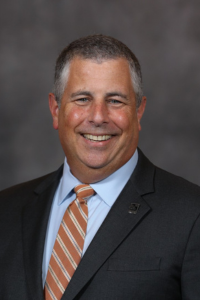
International Wildland-Urban Interface Code recommended by U.S Fire Administration
The U.S. Fire Administration released a Wildland-Urban Interface report recommending the adoption of model building codes for wildfire resilience
The nation’s wildfire problem has reached crisis proportions. Between 2005 and 2020, wildfires have destroyed more than 89,000 structures in the United States, including homes and businesses. The most damaging wildfires have occurred in the last few years, accounting for 62 percent of the structures lost over the last 15 years. Wildfires in the United States inflict an estimated economic loss of between $77.4 to $378.7 billion each year. This loss includes everything from fire suppression to evacuations to property loss and recovery efforts.
What is the Wildland-Urban Interface
The United States Fire Administration (USFA) defines the wildland-urban interface (WUI) as the zone of transition between unoccupied land and human development. Specifically, the WUI is the line, area or zone where structures and other human development meet or intermingle with undeveloped wildland or vegetative fuels. According to a recent report by the USFA, nine of every 10 wildland fires are caused by humans. Human-caused wildland fires have tripled the length of the wildfire season and are more likely to occur near homes in the WUI.
About the USFA’s WUI report
In June, the USFA released its Wildland-Urban Interface: A Look at Issues and Resolutions report. The 57-page report identifies 33 strategic challenges across 13 key WUI fire issue areas. These areas include public health and safety, the effects of climate change on WUI fires, community planning and resiliency, infrastructure and utilities, and socioeconomic impacts. Recommendations from the report are geared toward the U.S. Congress and other elected leaders and policymakers at all levels of government.
U.S Fire Administrator Dr. Lori Moore-Merrell issues a call in the report to “change the trajectory of the ever-increasing wildfire threat in America and create resilient landscapes for generations to come.” International Code Council staff participated in developing the report along with our national fire service partners, federal departments and agencies, members of the scientific research community, codes and standards development organizations, and other wildland fire stakeholders.
Community planning and resiliency in the WUI
One of the key challenges discussed in the report is the development of climate-adapted, fire-resistant, and resilient homes and infrastructure in the WUI. Most notably, for codes and standards professionals, is the finding that defensible space codes and standards are commonly misunderstood and not widely embraced by homeowners in the WUI. The report highlights that fire-resilient land planning and building codes are not widely adopted in WUI communities.
The report calls on the Wildland Fire Leadership Council — an intergovernmental committee of federal, state, tribal, county and municipal government officials convened by the secretaries of the Interior, Agriculture, Defense, and Homeland Security — to evaluate and develop strategies for local communities and state governments to adopt model building codes, specifically the Code Council’s International Wildland-Urban Interface Code (IWUIC), for wildfire resiliency. The report recommends the development and implementation of beyond-code, next-generation standards such as the forthcoming ICC 605 Standard for Residential Construction in Regions with Wildfire Hazard.
Public health and safety beyond the WUI
Separately, the report focuses on challenges to public health and safety, highlighting a lack of available research and solutions for the health hazards of smoke exposure during wildfires, especially when buildings and homes are involved. Smoke from WUI fires travels and can affect a large area outside of the fire zone. The report calls on the Department of Interior and its Environmental Protection Agency to develop a program that includes creating best practices and code change proposals to prevent or limit the effects of wildland fire smoke intrusion in the built environment.
Moving forward in the WUI
Code Council staff are coordinating with the USFA and key stakeholders to implement recommendations from the report. The Code Council continually advocates for adopting the International Codes and maintains that model codes constitute only the base or minimum requirements to be implemented by communities. To fully address wildfire risk in the WUI, communities must incorporate investments in wildfire preparedness, prevention and mitigation — like adopting the IWUIC and forthcoming ICC 605 standard — comparably to already established community investments in wildfire suppression, response and recovery.
As the report points out, “Our nation is on the precipice of an all-hands moment in which landowners, citizens, communities, infrastructure organizations, academia, researchers, not-for-profit organizations, governmental agencies, and others have critical roles in coordinating a collaborative approach to contain and control the threat of wildfire in the WUI.”
For more information on fire-resistant construction in the WUI, we encourage you to listen to our latest ICC Pulse Podcast, Living with Fire: How Wildland-Urban Interface Fires Impact Everyone, and visit the Code Council’s online WUI resource at www.iccsafe.org/wui.








